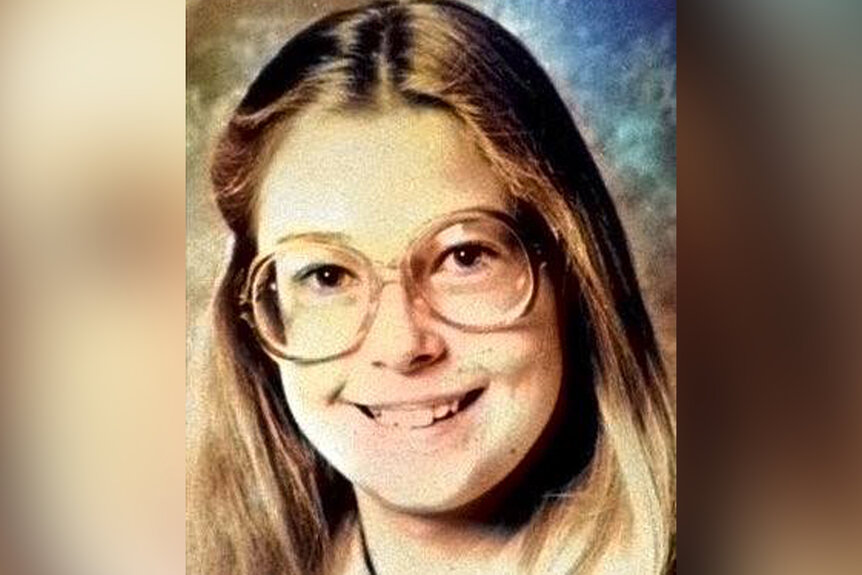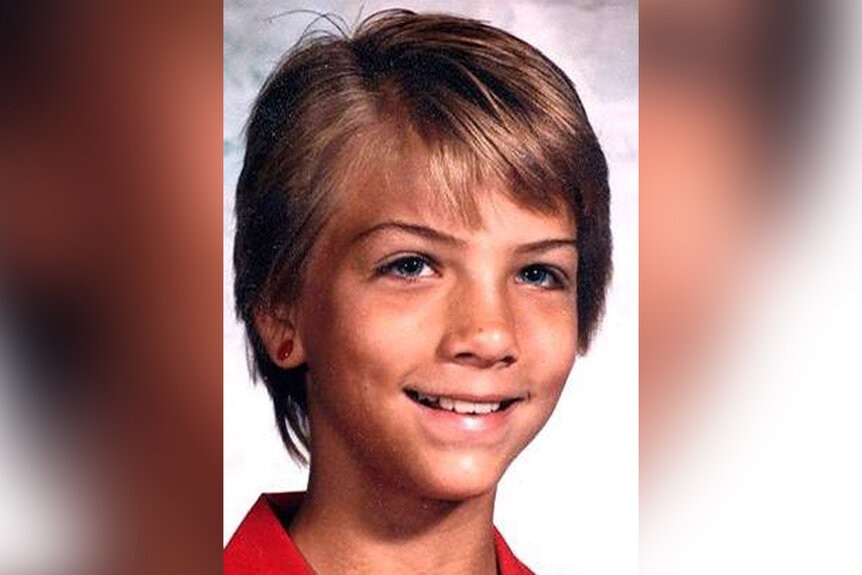Create a free profile to get unlimited access to exclusive videos, breaking news, sweepstakes, and more!
Who Killed 2 Washington Pre-Teens Who Disappeared On Bike Rides Months Apart In 1986?
Two girls, Michella Welch and Jennifer Bastian, disappeared five months apart while on bike rides through Tacoma's city parks, but decades after the brutal crimes, detectives would come to a surprising and unexpected realization about the crimes.
It was a beautiful sunny day in Tacoma, Washington when 12-year-old Michella Welch struck out on her bike with her younger sisters to Puget Park on March 26, 1986.
The trio arrived at the picturesque park tucked into the trees only to realize that they had forgotten their picnic lunch back at home. Michella offered to ride back home to get the meal, leaving Angela and Nicole behind. It would be the last time they ever saw their big sister.
After she rode off, Angela and Nicole realized they had to go to the bathroom and briefly left the park to find a nearby restroom. When they returned, they found Michella’s bike but no sign of their sister.
They used their “family call”—a loud yelp that echoed throughout the park—but Michella never returned the signal.
“And at that moment I knew,” Nicole would later recall to “Dateline: Secrets Uncovered," airing Wednesdays at 8/7c on Oxygen. “I just knew that something had happened.”
Police found Michella’s body with the help of a search dog near a makeshift fire pit hidden amongst the trees. Her throat had been slashed and she’d been beaten and sexually assaulted.
“I was in one of the police cars and they told me that they’d found her body and you know when you say found a body, it’s not a person. It’s terrible,” her mom, Barbara Leonard, told "Dateline" correspondent Keith Morrison of the moment her life changed forever.
The killing sent a chill through the quiet Tacoma community.
One of Michella’s classmates reported seeing a man in the park looking at the sisters on the day of the murder and was able to provide enough details for a sketch artist to create a rendering. In the weeks that would follow, investigators received numerous tips including one from a man who said he was jogging in nearby Point Defiance Park and had spotted a man who seemed to fit the description of the killer.
But without more to go on, Michella’s killer evaded authorities.
Then, just five months later, 13-year-old Jennifer Bastian disappeared during a bike ride through Point Defiance Park.
Jennifer — who had blonde hair and blue eyes like Michella — had been testing out her new Schwinn bike on the afternoon of Aug. 4, 1986 when she disappeared.
Police and volunteers combed the park for weeks searching for Jennifer, but found no sign of her.
Leonard paid a visit to Bastian’s mom, Pattie Bastian, but while Pattie thought it was a considerate gesture, she was adamant that her daughter had not met the same grim fate.
“She was very, very sweet, very nice, I said, ‘thank you’, she left, and I said to a friend who was sitting there ‘I’m not sure why she came. Jennifer’s not dead,’” Pattie recalled.
But on Aug. 28, 1986 as Pattie was painting the dining room of her Tacoma home to get her mind off the search for her youngest daughter, a Tacoma Police detective came to deliver the crushing news.
Jennifer’s body had been found in the woods, hidden with some brush. She had been sexually assaulted and strangled to death. Her bike was found not far away carefully concealed with branches and leaves.
“I have my fairytale, I think, and I’ll just live with it,” Pattie told Morrison of what she believed happened the day Jennifer was killed. “She was riding her bike, the monster came out of the woods and grabbed her and killed her. More than that, I can’t wrap my brain around.”
The community was left shell-shocked and children were no longer able to carelessly roam through the once-safe neighborhoods.
Investigators chased down leads for years, but eventually the murders went cold until Tacoma Police Detective Lindsey Wade took a new look at the case. Wade had grown up in the area and had been just 11 years old herself when both girls were killed.
“It definitely scared the heck out of me,” she remembered. “There would be certain times where if I was out riding my bike or if I was walking, it would be something that I would think about.”
Now, as cold case detective, Wade returned to the scene of the crimes and began immersing herself in the quiet wilderness to try to find some new clue that would lead her to a killer. She pored through binders filled with tips and collected the names of any males who had intersected with the original investigation, whether they had been witnesses, tipsters, or potential suspects at the time and came up with a lengthy list of approximately 2,300 names.
“My working theory at the time was this guy has got to be somebody whose been convicted of a sex crime or another murder and somehow he’s slipped through the cracks,” she said.
Investigators had recovered DNA from semen in Michella’s body, but initially did not have any DNA evidence in Jennifer’s case.
Wade decided to test Jennifer’s swimsuit she had been wearing at the time of the murder for DNA and was able to recover a semen sample found in the crotch of the swimsuit.
She sent both samples off for testing, but was shocked when the lab report showed the two samples didn’t match, revealing the two girls had been killed by two different murderers.
“I was absolutely dumbfounded,” Pattie said.
Although it had initially seemed like a promising development, Wade said neither DNA sample was a match to anyone in the national CODIS database and investigators were still left with no viable suspects.
Eager to help “do something,” Pattie began to volunteer in the cold case department, helping detectives with anything she could — although she was never given access to the case files.
“We just hit it off,” Wade said. “She was so supportive and so positive and just volunteered for anything she could do to help us make our jobs easier.”
As time went on, advances in DNA technology were also emerging. Wade enlisted the help of a forensic genealogy expert who was able to provide detectives with a list of possible last names after analyzing DNA uploaded to public genealogy websites.
In 2016, the cold case team enlisted Parabon Nanolabs to use the two DNA samples to create sketches of the suspects using their genetic characteristics and traits. They released the sketches to the public, but didn’t receive the tip they needed to crack either case.
Wade decided to go back to her list of 2,300 men somehow involved with either case and identified a few hundred higher probability suspects. She also included the name of the jogger who had called police all those years ago after seeing a man he believed matched the description of Michella’s killer in Point Defiance Park because his last name had been one of the possibilities given to detectives by the forensic genealogy expert.
With the help of the FBI, detectives tracked down 160 men and retrieved voluntary DNA samples. Wade sent the samples off in batches, but the work took time.
In 2018, she was discouraged by the number of samples that didn’t match and retired. Before she left, she sent the final 18 DNA samples collected for testing. It would prove to be a crucial move. Within a month after leaving her post, Wade got a call from another detective in the cold case unit with the surprising news that one of the samples she sent had matched to the DNA found in Jennifer’s case.
It belonged to Robert Washburn, the man who had called investigators with that tip in Michella’s case months before Jennifer’s murder.
“I knew exactly who it was, but I could just not believe it,” she said.
Just a few months later, genetic genealogy would also help solve Michella’s case. Parabon Nanolabs was able to use new DNA methods to narrow Michella’s killer to one of two brothers. Investigators followed one of the men — a nurse at a psychiatric facility — and were able to get his DNA from a napkin he used at a restaurant. It was sent to the lab and matched the DNA left behind at the crime scene.
Gary Hartman was later convicted of killing the 12-year-old at a bench trial, according to KOMO.
Robert Washburn pleaded guilty to killing Jennifer in 2020 and was sentenced to 27 years behind bars, but he never provided investigators with any information about why he had inserted himself into Michella’s case months before Jennifer’s death.
“That’s another question that we would all like to know the answer to,” Wade said.
The arrests, however, did give the victims' grieving mothers some of the answers they had waited decades to hear.
“I believe fully in the devil,” Leonard said of the man who took her daughter’s life. “I think people who don’t believe in the devil are in for a big surprise.”
While nothing will bring the either girl back, Wade and Pattie worked together to honor the pre-teens. They advocated for the passage of a bill in Washington state expanding DNA collection and ensuring the data gets to a national registry right away in a law aptly named “Jennifer and Michella’s Law.”
For more on this episode and others like it, watch "Dateline: Secrets Uncovered," airing Wednesdays at 8/7c on Oxygen or stream episodes here.




































